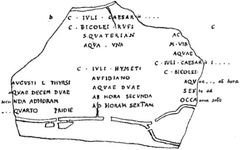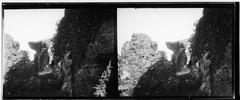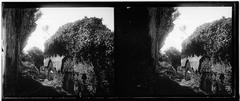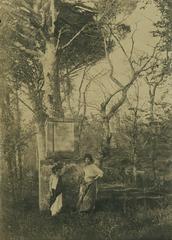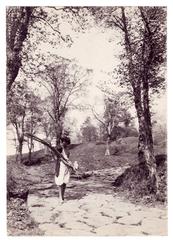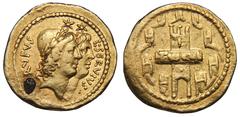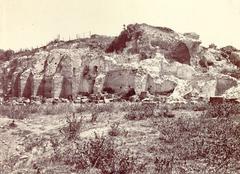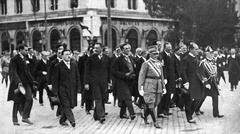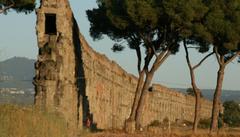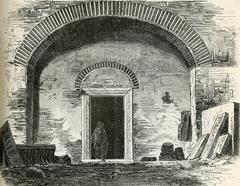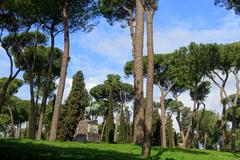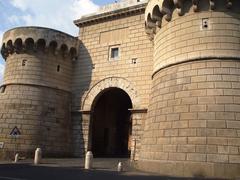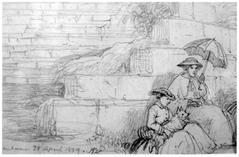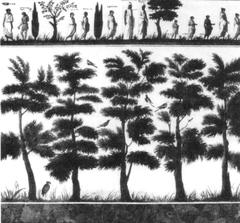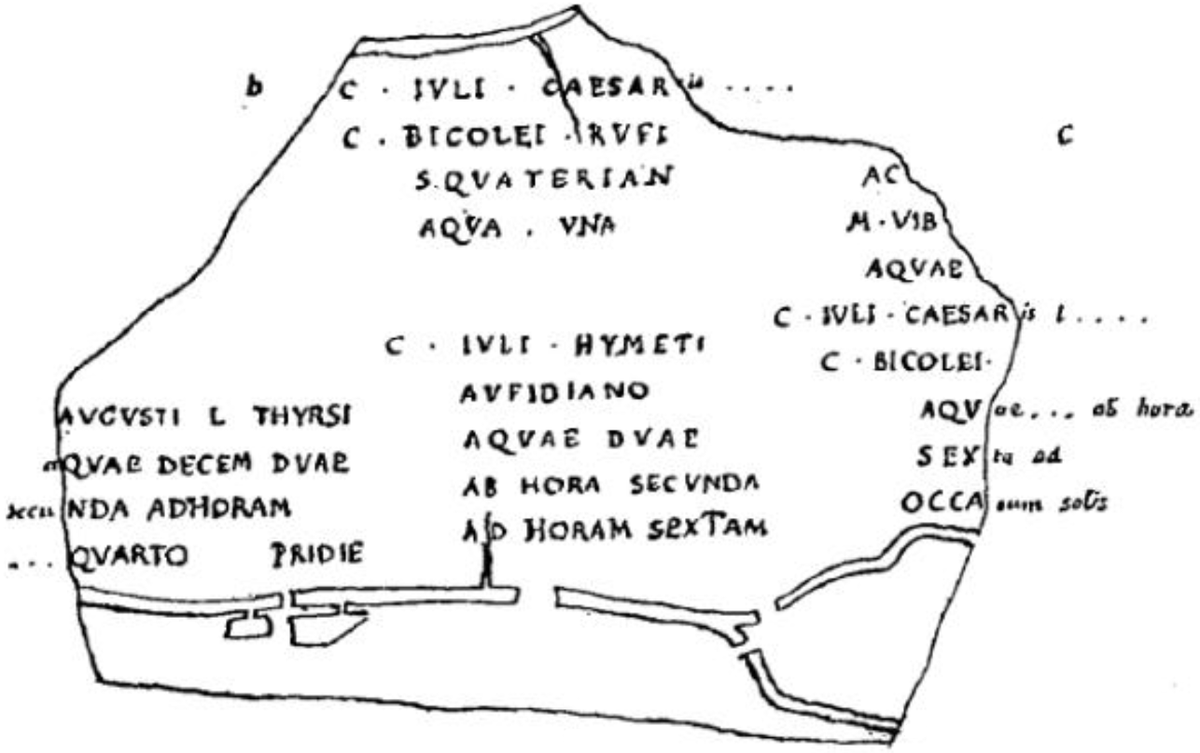
Tusculum Visiting Hours, Tickets, and Historical Sites in Grottaferrata, Italy
Date: 14/06/2025
Introduction: The Enduring Legacy of Tusculum
Perched atop the Alban Hills overlooking the Castelli Romani region, Tusculum is a remarkable testament to Italy’s layered history, blending mythic origins, Roman grandeur, and medieval intrigue. This ancient Latin city, located near Grottaferrata, invites visitors to step into a world where legend, politics, and culture shaped the course of central Italy. Today, the Parco Archeologico Culturale di Tuscolo preserves the evocative ruins and natural landscapes, making it an essential destination for history enthusiasts and travelers seeking to explore Italy’s past (Rome and Beyond; Turismo Roma).
This guide provides an in-depth look at Tusculum’s historical significance, key archaeological features, practical visitor information—including visiting hours, tickets, and accessibility—and highlights nearby attractions in Grottaferrata and the Castelli Romani.
Table of Contents
- Introduction
- Historical Overview: Origins to Medieval Era
- Key Archaeological Features
- Cultural Importance and Legacy
- Visiting Tusculum: Practical Information
- Nearby Attractions in Castelli Romani
- Responsible Tourism and Preservation
- Frequently Asked Questions (FAQ)
- Conclusion and Travel Resources
- References
Historical Overview: Origins to Medieval Era
Ancient Beginnings and Roman Prosperity
Tusculum’s origins date back to the Iron Age, with archaeological evidence confirming continuous occupation from the 10th–9th centuries BCE (Britannica). According to legend, the city was founded by Telegonus, son of Ulysses and Circe, entwining it with the mythic traditions of ancient Italy (Rome and Beyond). Its strategic hilltop position made it a key member of the Latin League, which resisted Roman domination.
Tusculum’s fate shifted after the Battle of Lake Regillus (496 BCE) when it allied with Rome, becoming the first Latin city granted full Roman citizenship in 381 BCE. As a prosperous municipium, Tusculum attracted Roman elites—among them Cicero, who composed his philosophical works here (Britannica). The city’s infrastructure flourished, featuring theatres, forums, temples, villas, and amphitheatres, many of which remain visible today (Lazio Nascosto).
Medieval Resurgence and Final Destruction
With the decline of the Roman Empire, Tusculum was revived as a fortified medieval stronghold under the Counts of Tusculum, who played a significant role in papal and regional politics. Remnants of defensive walls and a Christian basilica highlight its medieval importance (Lazio Nascosto). However, in 1191, the city was destroyed by Roman forces due to political rivalries and was never rebuilt (Britannica). The population dispersed to nearby towns such as Grottaferrata and Frascati, shaping the cultural fabric of the region.
Key Archaeological Features
Roman Theatre
Tusculum’s Roman theatre, built in the 1st century BCE, is the best-preserved monument on the site. Once seating up to 2,000 spectators, it remains a venue for summer classical theatre festivals, echoing the city’s ancient traditions (Turismo Roma; Visit Castelli Romani).
Forum, Basilica, and Civic Structures
The forum, located next to the theatre, served as the city’s civic and religious heart. Remains include the basilica, an archaic fountain, and the temple of Mercury, illustrating Tusculum’s urban sophistication (Visit Castelli Romani).
Acropolis and Medieval Remains
At the summit, the acropolis features ancient fortifications and the ruins of the medieval fortress and Basilica of the Holy Trinity. Visitors are rewarded with panoramic views over the Latina Valley and, on clear days, the Tyrrhenian Sea (Turismo Roma).
Amphitheatre and Extra-Urban Sanctuaries
The 2nd-century AD Roman amphitheatre lies partially underground, accessible via the Via dei Sepolcri, which also connects to Tusculum’s necropolises. Traces of ancient sanctuaries and the Sacred Wood highlight the city’s religious traditions (Visit Castelli Romani).
Cultural Importance and Legacy
Tusculum’s storied past is enriched by its legendary foundation, Roman intellectual legacy, and medieval significance. Figures such as Cicero, Cato the Censor, and members of the imperial and papal aristocracy are associated with the city (Britannica). Cicero’s “Tusculanae Disputationes,” written at his villa here, attests to the city’s enduring influence on philosophy and literature.
After its destruction, Tusculum’s cultural impact persisted in the nearby towns and in Italy’s historical consciousness—its ruins now serve both as a site of reflection and as a backdrop for contemporary cultural events.
Visiting Tusculum: Practical Information
Visiting Hours and Tickets
The Parco Archeologico Culturale di Tuscolo is generally open daily from 9:00 AM to 6:00 PM, with last entry 45 minutes before closing. Hours may vary seasonally or during special events; always confirm on the official website or local tourism sites.
- Tickets: Standard adult admission is around €8, with discounts for EU citizens aged 18–25 and free entry for children under 18. Some events and guided tours may incur additional fees (Visit Castelli Romani).
Getting There
- By Car: From Rome, take the A1 motorway to Monte Porzio Catone or Frascati, and follow signs to Tuscolo. Limited parking is available near the entrance.
- By Public Transport: Trains from Rome Termini reach Frascati (approx. 30 minutes). From Frascati or Grottaferrata, take a taxi or hike to the site.
- On Foot or Bicycle: Well-marked trails connect Tusculum with neighboring towns, passing through forests and vineyards.
Accessibility
While the site’s ancient terrain is uneven and sometimes steep, key areas like the forum and theatre have improved accessibility. Visitors with limited mobility should contact the park in advance to arrange assistance.
Guided Tours, Events, and Educational Programs
Guided tours are offered, especially in summer and on weekends, in Italian and English. The theatre hosts classical performances and festivals, while educational programs for schools and groups are available by reservation (Visit Castelli Romani).
Facilities and Amenities
- Restrooms: Limited facilities near the entrance.
- Picnic Areas: Shaded spots available for visitors.
- Drinking Water: Bring your own, as fountains may not always be operational.
- Visitor Information: Interpretive panels and QR codes provide historical context throughout the park.
Nearby Attractions in Castelli Romani
Abbey of Santa Maria di Grottaferrata
Just a short drive from Tusculum, this 11th-century Byzantine abbey is a living center of Eastern Christian tradition and art (Audiala).
Ville Tuscolane and Regional Highlights
Explore the Renaissance and Baroque villas of Frascati, such as Villa Aldobrandini, renowned for their architecture and gardens. The surrounding Castelli Romani towns are famous for their wine, cuisine, and scenic beauty (Visit Castelli Romani).
Responsible Tourism and Preservation
Tusculum is a fragile archaeological site. Please:
- Remain on marked trails to protect ancient remains.
- Avoid littering; use designated bins.
- Do not touch or remove stones and artifacts.
- Support site conservation through donations or volunteering.
- Respect local wildlife and flora.
For more on sustainable and community-based tourism, see Sustainable Tourism Insights and Community-Based Tourism Best Practices.
Frequently Asked Questions (FAQ)
Q: What are Tusculum’s visiting hours?
A: Usually 9:00 AM–6:00 PM, with last entry 45 minutes before closing. Check the official website for seasonal changes.
Q: Is there an entry fee?
A: Standard adult tickets are about €8; discounts apply for EU youth and children under 18.
Q: How do I reach Tusculum by public transport?
A: Take a train from Rome to Frascati, then a taxi or hike to the site.
Q: Is the site accessible for visitors with disabilities?
A: Some areas are accessible; contact the park in advance for assistance.
Q: Are guided tours available?
A: Yes, in Italian and English, especially during peak seasons and weekends.
Q: Are there restroom or café facilities?
A: Basic restrooms are available; there are no cafés on-site.
Conclusion and Travel Resources
Tusculum’s enduring allure lies in its seamless blend of history, archaeology, and natural beauty. Whether exploring its ancient theatre, walking panoramic trails, or attending cultural events, visitors are immersed in a place where legend and legacy converge. Pair your trip with nearby attractions in Grottaferrata and the Castelli Romani to enrich your travel experience.
For the latest details on Tusculum visiting hours, tickets, events, and guided tours, download the Audiala app and follow official channels. By exploring Tusculum responsibly, you help preserve its treasures for future generations.
References
- Tusculum Historical Overview and Visitor Guide: Exploring the Castelli Romani’s Ancient Gem, 2025, Britannica, (https://www.britannica.com/place/Tusculum)
- Tusculum Archaeological Site: Visiting Hours, Tickets & Historical Significance near Grottaferrata, 2025, Turismo Roma, (https://www.turismoroma.it/en/places/tuscolo-archaeological-cultural-park)
- Tusculum Archaeological Site: Visiting Hours, Tickets & Historical Significance near Grottaferrata, 2025, Visit Castelli Romani, (https://www.visitcastelliromani.it/en/travelguide/archaeological-excavations-of-tusculum/)
- Tusculum Visiting Hours, Tickets & Guide to Castelli Romani Historical Sites, 2025, Visit Castelli Romani, (https://www.visitcastelliromani.it/en/informations/grottaferrata/history/)
- Grottaferrata Information, 2025, Audiala, (https://audiala.com/en/italy/grottaferrata)
- Tusculum History, Philosophy and Nature, 2025, Rome and Beyond, (https://romeandbeyond.altervista.org/tusculum-history-philosophy-and-nature/)
- Parco Archeologico Culturale di Tuscolo – Official Information
- Sustainable Tourism Insights
- Community-Based Tourism Best Practices
- Heritage Preservation and Responsible Tourism
